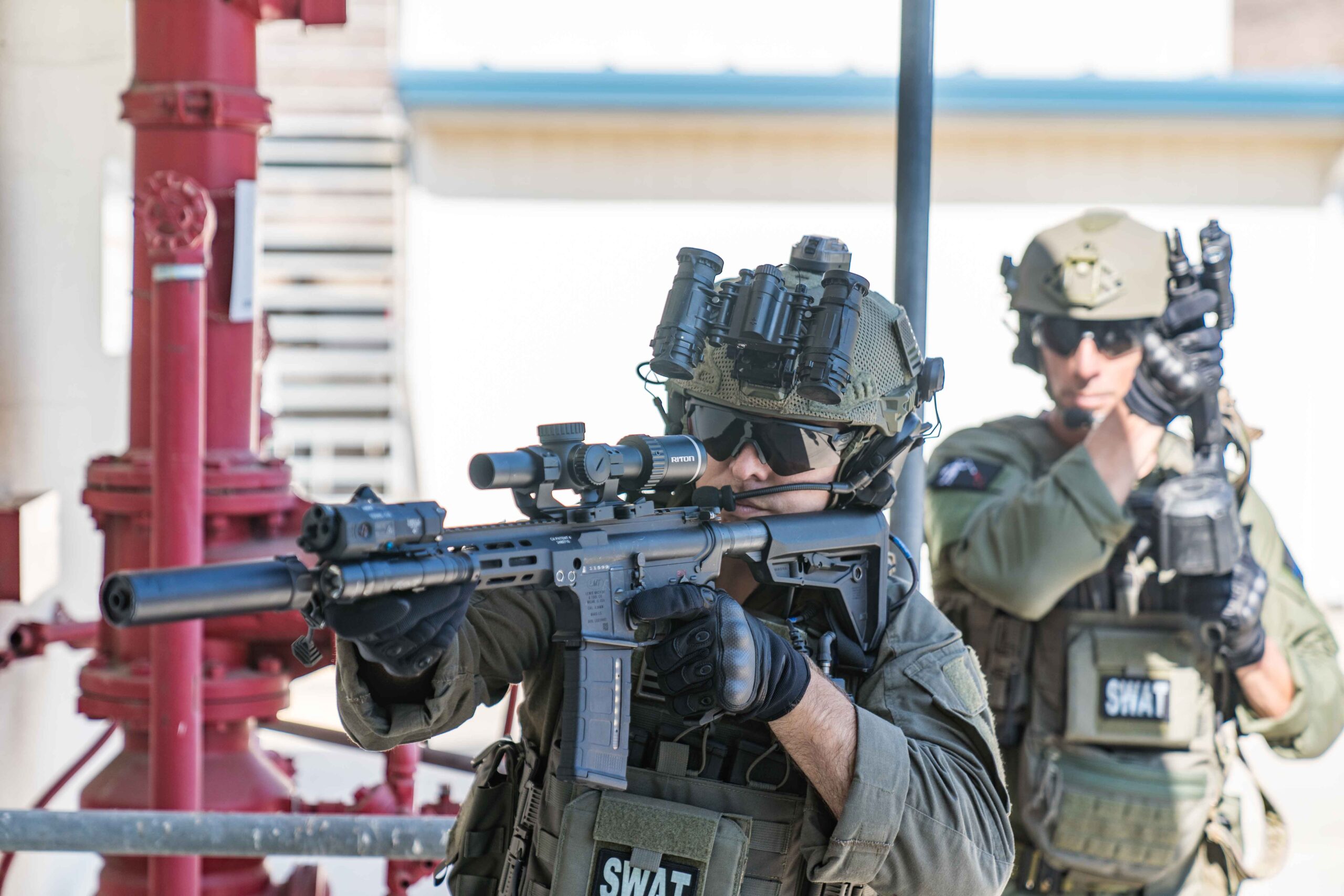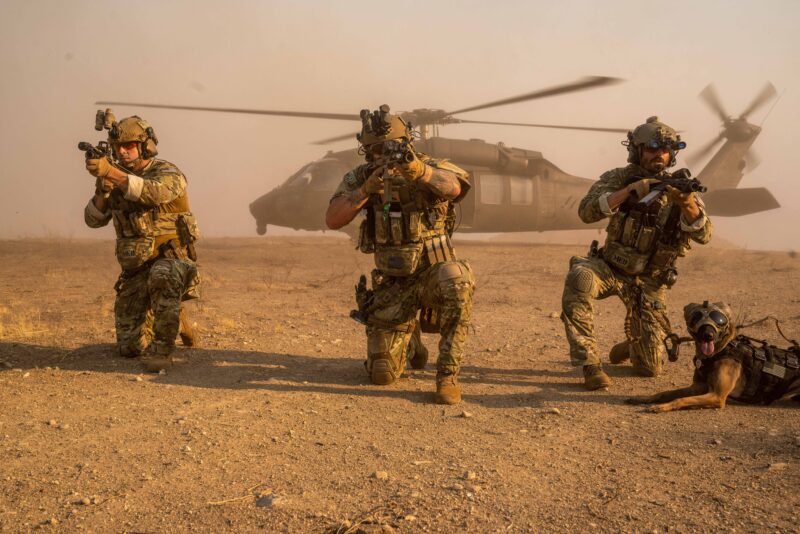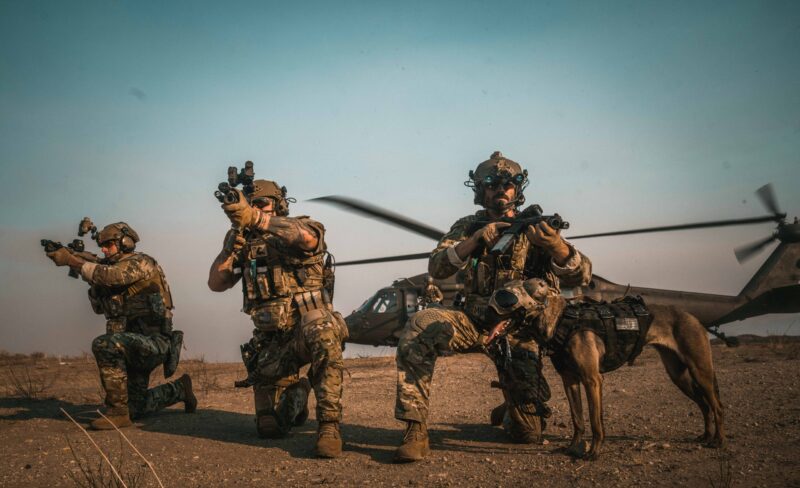Types Of Military Training Exercises

Military training exercises are the backbone of operational readiness, defining armed forces’ physical, mental, and strategic abilities worldwide. These exercises prepare soldiers for tough situations, including wars and humanitarian efforts. They help soldiers learn to handle challenges in combat and non-combat environments.
But military training isn’t all about weapons training or marching routines. It’s a sophisticated, multi-level process that mirrors a country’s defense doctrine, technological progress, and strategic goals.
The Role and Significance of Military Training

Military training is not a once-and-done scenario—it’s an ongoing process that adapts to changing threats, emerging technologies, and developing doctrines. It also directly ties into the evolving challenges and solutions in equipping military personnel, making continuous training essential. Here’s why it cannot be avoided:
1. Operational Readiness
Military personnel should be ready to react to any emergency at any moment. Training regularly ensures troops are physically equipped and mentally prepared to act rapidly and accurately under pressure.
2. Strategic Flexibility
Contemporary war zones are dynamic, with cyber warfare, city fighting, and drone reconnaissance. Training allows personnel to adjust tactics and technologies quickly.
3. Coordination and Unity
Coordination is crucial, whether within a platoon or between global allies. Tactical drills establish lines of communication and trust between units and countries.
4. Mimicking Real-World Situations
Training exercises mimic battlefield conditions—city battles, jungle warfare, seaborne attacks—allowing soldiers to practice in the conditions they will face in actual operations.
10 Key Types of Military Training Exercises

Now that we understand how important training is, we can break down the key stages of a modern soldier’s journey, from boot camp to battle operations.
1. Basic Training (Boot Camp)
This is the first stage of transformation, when civilians are turned into soldiers. Basic training is rigorous, meant to drive home discipline, stamina, and basic combat skills. Recruits are taught everything from functional fitness and weapon drills to teamwork and military etiquette. It’s the introduction to military life and the first taste of structured routine and mental resilience.
What It Involves
- PT & Conditioning: Push-ups every day, running, obstacle runs.
- Drill & Ceremony: Marching, salutes, formation drills.
- Weapons Training: Rifle maintenance, cleaning, marksmanship.
- Combat Skills: Hand-to-hand combat and bayonet drills.
- Customs & Courtesies: Military and rank etiquette, salutes.
- Classroom Learning: History, values, UCMJ.
- FTX: Simulated combat training.
2. Advanced Individual Training (AIT)
After boot camp, troops specialize in a particular job. Whether tank operator, intelligence analyst, or communications specialist, this period concentrates on role-related skills. A future army medic learns emergency trauma care through intense training. An engineer studies how to handle explosives and construct things for combat.
Skill Development Areas
- MOS Courses: Role-specific technical training.
- Hands-On Practice: Tools, equipment, systems.
- Scenario Drills: Realistic, job-oriented simulations.
- Certifications: EMT, cyber, mechanical, etc.
- Live Task Execution: Skill application in the real world.
3. Unit-Level Training Exercises
We focus on training small to mid-sized military units, like squads or battalions. Our main goals are synchronization, maneuver execution, and maintaining operational tempo in a simulated combat setting. This includes field training exercises and live-fire drills that provide soldiers with realistic scenarios. These scenarios require quick decision-making and teamwork.
Key Elements
- Tactical Drills: Small-unit maneuvers.
- Live-Fire: Coordinated use of live ammo.
- Mission Planning: Objectives, rules, coordination.
- Comms Training: Radios, hand signals.
- AARs: Review and improve performance.
4. Joint Military Exercises
A nation’s armed forces commonly act as a combined command during hostilities. Joint exercises mimic this by mixing the Army, Navy, Air Force, and Special Forces in combined operations. Such exercises enhance inter-branch communication and sharpen strategies that cover air-ground coordination, amphibious attacks, and multi-domain operations.
Execution Approach
- Cross-Branch Ops: Army, Navy, Air Force, Marines.
- Unified Planning: Common strategies and objectives.
- Air-Ground Drills: CAS, medevac coordination.
- Amphibious Ops: Ship-to-shore training.
- Integrated Command: Joint command structures.
5. Combined (Multinational) Exercises
Exercises carried out between two or more allied countries are crucial for global cooperation. They enhance interoperability—how effectively different nations’ forces can work jointly in combat or humanitarian operations. Exercises such as RIMPAC, Indra, and Balikatan reinforce diplomatic relationships and demonstrate collective power in geopolitically vulnerable areas.
Collaboration Model
- NATO/UN Protocols: Codified procedures.
- Cultural Training: Coalition ops awareness.
- Joint Missions: Peacekeeping, patrols, and humanitarian aid.
- Language Support: Basic language translators.
- Unified ROE: Legal and engagement harmonization.
6. Simulated and Virtual Training
With technology, most militaries nowadays use high-fidelity simulators to train their troops. Flight simulators for pilots, VR combat missions for infantrymen, and war-gaming software for commanders offer realistic experiences at no cost or risk in the real world. Such training and advanced tactical technology are particularly useful for troops in high-risk areas such as aerial battles or cyber warfare.
Tools & Methods
- VR Simulators: Flight, combat, marksmanship.
- Digital Ranges: Real-time shooting feedback.
- War Games: Strategic decision-making.
- Cyber Labs: Offense and defense ops.
- AI Scenarios: Dynamic, adaptive training.
7. Counterinsurgency (COIN) Training
In modern-day global conflicts, traditional warfare is increasingly supplemented by guerrilla warfare and asymmetrical threats. COIN training emphasizes urban warfare, intelligence gathering, and winning the “hearts and minds” of civilian populations. Soldiers are taught to recognize insurgents, collaborate with local communities, and carry out operations in densely populated areas with minimal collateral damage.
Key COIN Techniques
- Urban Warfare: Room entry, building clearing.
- Intel & Surveillance: Recon, mock interrogations.
- Cultural Immersion: Drills for interaction with civilians.
- Hearts & Minds: Distribution of aid and support among locals.
- IED Training: Neutralization and Detection
8. Peacekeeping and Humanitarian Training
Contemporary armies are enlisted to undertake non-combat operations such as disaster relief, evacuation, and peacekeeping. The training for these operations focuses on cultural awareness, negotiating, and NGO coordination. Such training is especially valuable for nations that have troops serving in UN peacekeeping operations or international disaster relief missions.
Essential Training Aspects
- Negotiation: De-escalation, crowd control.
- NGO Coordination: Joint disaster response.
- Evac Drills: NEO simulations.
- Refugee Ops: Shelter and aid logistics.
- UN ROE: Peacekeeping engagement rules.
9. SERE (Survival, Evasion, Resistance, and Escape) Training
High-risk occupations, such as those of pilots or Special Forces, are designed for SERE training, which instructs soldiers on survival in a hostile environment, evasion of capture, resistance to interrogation, and escape from captivity. It involves wilderness survival, navigation, and psychological toughness. Physically and mentally demanding, intensive training is essential for missions into hostile territory.
Survival Skillset
- Survival: Shelter, fire, food, water.
- Evasion: Stealth, concealment, movement.
- Resistance: Interrogation resistance, coping.
- Escape: Break restraints, move to safety.
- Mental Resilience: Stress and endurance training.
10. Special Operations Forces (SOF) Training
Navy SEALs, SAS, or Spetsnaz undergo advanced training well over standard norms. Their training involves parachuting from high altitude, combat diving with full equipment, demolitions, foreign language training, and guerrilla warfare techniques. SOF training is designed for covert operations in the most hostile and politically charged environments.
Advanced Training Structure
- Selection: Rigorous physical/mental testing.
- Unconventional Warfare: Guerrilla, sabotage, recon.
- Insertion Techniques: HALO, SCUBA, fast-roping.
- FID Missions: Trainers of foreign allied troops.
- Language & Culture: Immersion for clandestine ops
Final Thoughts
Military training exercises are far more than mundane drills—they are a strategic imperative. Whether honing individual skills, building unit cohesion, or developing global partnerships, these exercises equip soldiers to confront the unpredictable nature of contemporary war.
In-depth and responsive training is the key to a world where threats come from conventional military powers, guerrilla forces, or cyberspace. As militaries continue to develop, so will the training processes that ensure they remain mission-capable.
FAQs
How frequently do military training drills take place?
It varies with the country and unit type. Exercises are performed every week at the unit level, while joint or multilateral exercises can be yearly or every other year.
What is the distinction between combined and joint exercises?
Joint exercises are between various branches of a single country’s military. Combined exercises involve two or more countries combining their forces.
Are civilians ever part of military exercises?
In some humanitarian and peacekeeping exercises, civilian agencies or NGOs might be involved to enhance coordination during actual crises.
